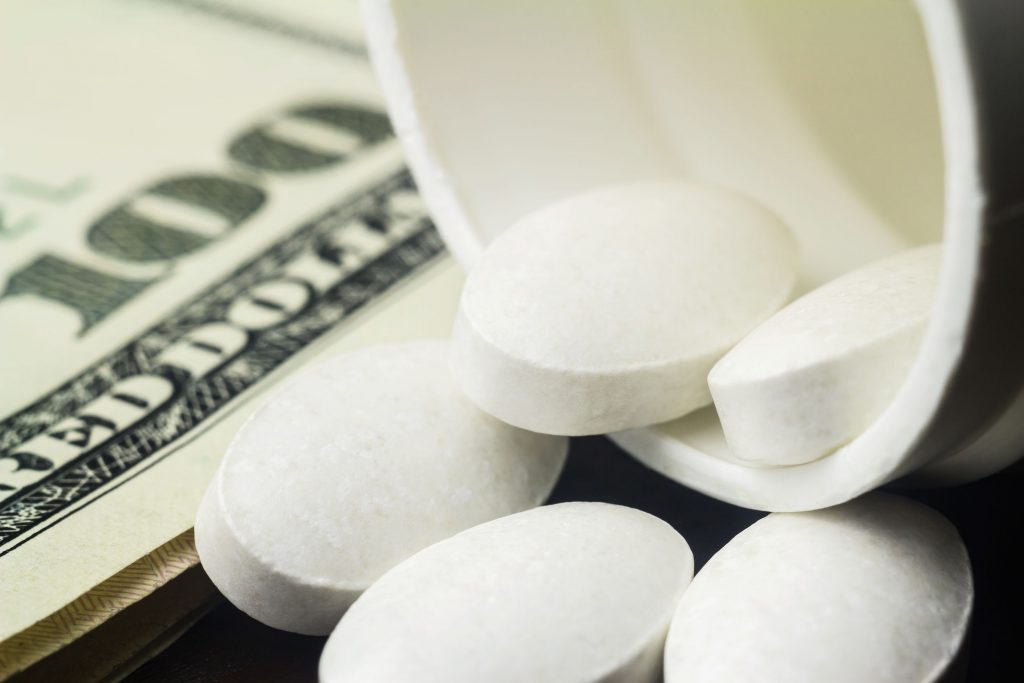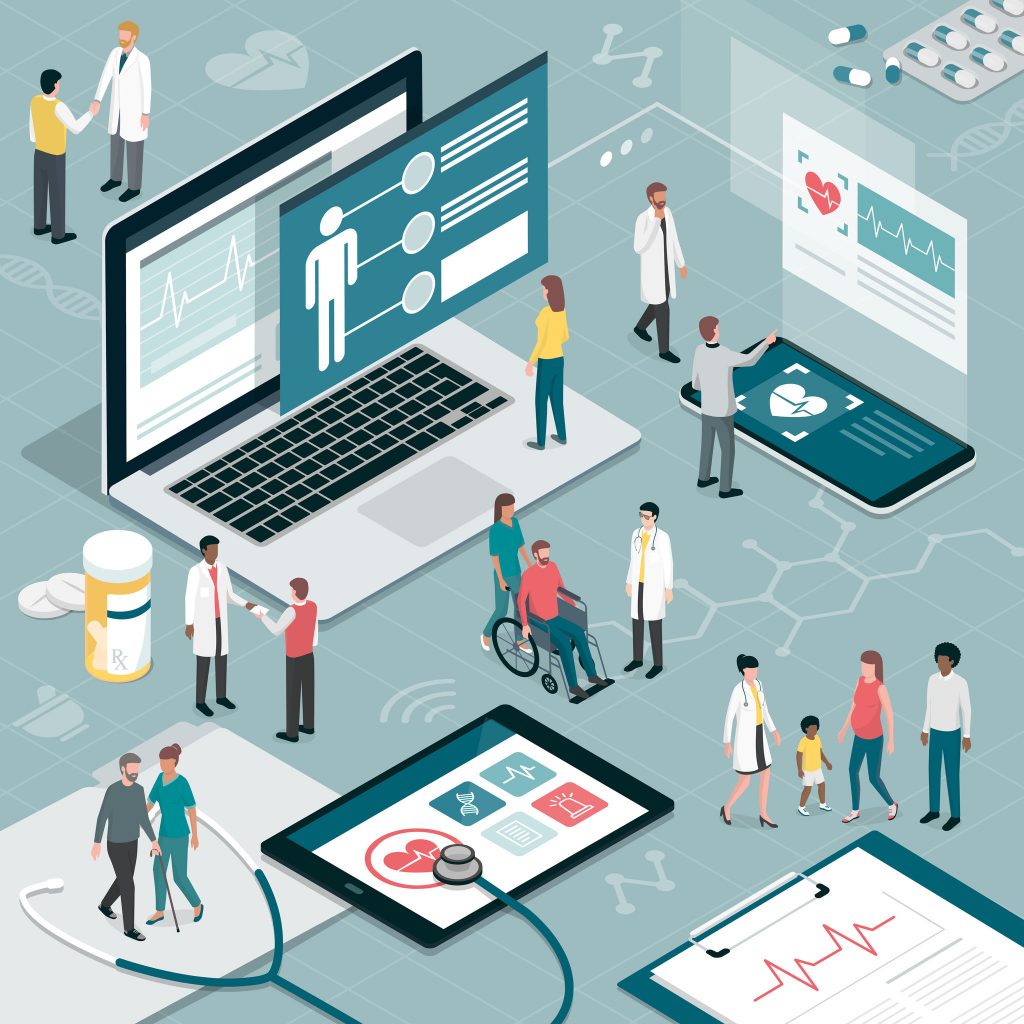Prescription Assistance Programs, Costs, Needs, How It Works, and More About Prescription Hope’s Medication Access Service
Posted by Prescription Hope - See Editorial Guidelines (Last Updated On: Fri Apr 28 2023)
You might often hear the terms Prescription Assistance Program or, Medication Assistance Program. These terms are often interchangeable, but in fact, they all refer to the system known as “Patient Assistance Program” or PAPs.
So in this article, we’re going to go over everything you need to know about Patient Assistance Programs, why it exists, how it works, and the benefits it can bring.
But first, let’s give you a quick summary to get you some answers, then we’ll dive into more details…
What Is Prescription Assistance Program? Prescription Assistance Programs (PAPs) are more commonly known as Patient Assistance Programs. These programs help qualifying individuals to obtain medications at a low cost. Drug manufacturers work with partners to offer PAPs. It’s seen as part of their social responsibility and for marketing.
But what exactly are PAP’s and how do they work? Let’s explore that further now…

What Are Prescription Assistance Programs?

Prescription Assistant Programs – or rather – Patient Assistant Programs, also called PAP’s was started with the pure intention of helping those who deserved it.
Meaning PAPs focus on helping patients who cannot afford medications or those who are struggling to maintain the medical supplies they need.
This includes individuals who have no health insurance, prescription drug coverage, or any other similar help with costs to obtain the medications they need.
In a nutshell, PAP’s are designed to help people who can’t afford their medications. Those who are eligible get prescription assistance at a very low cost. So it’s always worth enrolling to get an idea through Prescription hope’s medication access service, even if you’re not sure if you meet any of the requirements.
Who Offers Patient Assistance Programs – and Why
PAPs are typically offered by pharmaceutical companies via partner services like ours here at Prescription Hope.
This assistance is provided to those qualifying individuals …according to their set conditions for eligibility and other related terms.
Although it’s not exactly sure why pharmaceutical companies do this, most of them likely do this as part of their social responsibilities program. Meaning a social service through which assistance is provided to those eligible to obtain medications that come with the program’s coverage, at a low cost.
This is seen as providing a valuable service to the intended market (pharmaceutical) and its target customers who are unable to afford prescription medications.
This in turn helps the target customers to comply with recommended drugs, doses, and overall better health outcomes to the whole economy.
As such many pharmaceutical companies who offer these programs believe that it’s a social obligation to help target customers who can’t afford to pay for their pharmaceutical products, to get them through with much-needed assistance.
However, some also believe pharmaceuticals provided these programs as something of a marketing tool.
If PAPs serve as a potential marketing tool, then the idea is that once those who are currently using a PAP should then improve their circumstances, they may still need the same medications and are therefore in a position to pay the full price for products – from the same brand that they’ve come to use and trust.
So this is a continuous or recurring set of customers for the pharmacies and drug manufacturers and benefits the patient when they needed it most. A win-win scenario for all!
In the past decade, PAP’s – including many of those from Prescription Hope, have helped more than 36 million people in the US to obtain their medications.
And yearly around $13 billion worth of medications are provided through these programs, for people who can’t afford to pay for their medications.
Let’s go through some of the basic ways in which Patient Assistance Programs work and the costs involved.
Basics of Prescription Assistance Programs
In general, all PAP’s are aimed at helping eligible people to obtain their medications at the lowest cost possible.

However, depending on the pharmaceutical company that offers these programs, they do have certain parameters in place in order for individuals to qualify for this program.
It’s common for all pharmaceuticals companies to have some form of specified rules, regulations, and other guidelines for qualification to the PAP, and these can differ between pharmaceutical companies and even between drug requirements.
As the core of each program, they all have some form of income guidelines, these can vary considerably – which is why it’s always worth applying for Prescription Hope’s medication access service regardless of your income status.
All pharmaceuticals select what type of coverage the eligible individuals receive.
Coverage here means the medications that are covered under the PAP. Very often, the pharmaceuticals will try to cover as many brands and generic versions as possible that they sell.
Very often, when deciding what lower cost the enrollees have to pay for a specific medication, the pharmaceutical manufacturers will try to at least cover their costs, and then provide the medications at a very low price.
What Are the Drug Costs?
It takes around 10-15 years to fully develop a drug robust enough for the market. According to figures published in 2013, there is a dramatic rise in the cost of research and development for drugs over the last 40 years. Around 16-20% of sales profits are put back into R&D.
So as these costs may differ between companies and drug types, it’s important to properly analyze and undertake the research on how Prescription Hope’s medication access service works before enrolling for the program.
In order to get cover, most of the time the Patient Assistant Program as a basic eligibility criterion that will require the enrollee to verify three main points.
- Limited or no prescription coverage from private or public sources
- Demonstrable financial need document, based on income and assets
- Proof of U.S citizenship or residence
Why There’s a Need for the Patient Assistance Program
The use of prescription medications is inevitable for most people. Especially amidst a number of increasing diseases and related complications, prescription medications are an integral part of leading a healthy life for everyone – and it’s on the increase.
Prescription drug sales are expected to continue a steady rise through 2024 worldwide, for which the US provides a large portion of drug sales abroad.
data source: evaluate
Prescriptions are also an important part of providing quality medical care. Around two out of three visits to a doctor conclude with a prescription being issued. In 2005 alone, around 3.5 billion prescriptions were filled in the U.S.
Prescription medications can be written for a variety of reasons. From being prescribed for minor health issues like clearing a sinus, infection, and so on, to treating lifesaving medical conditions like asthma, diabetes, and heart conditions.
Prescription medications have a wide range for specific purposes. This also means that proper access to these medications for related medical conditions could mean improved patient outcomes.
Access to these medications also enhances and supports in improving the quality of life, along with delaying or preventing more complicated medical conditions.
As much as the importance of prescriptions is seen, the real problem with prescription medications is the inability for everyone to afford or equally obtain them.
In the US alone, the number of patients who can’t afford to pay for prescription medications is continuously rising. This increasing trend impacts overall public health and the general quality of economic health too.
According to estimations, around 46 million Americans do not have health insurance. Among these numbers are the underinsured.
And out of these underinsured, around 8 from every ten are from working families. And among these millions, one out of 10 individuals who are 65 years or younger or one in three persons who are 65 years do not have prescription drug coverage.
Alongside these, especially among people with low income, senior or older patients and those who are required to take multiple medications for complex or serious health conditions face the most difficulties.

Impact of Not Entering a Patient Assistance Program

As a solution to facing these difficulties, many tend to skip or reduce their prescribed medication doses.
They do this as a way of dealing with the cost concern that comes with affording to pay for prescription medications.
Sadly while this is the condition with insured patients and families, uninsured people and families are twice as likely to miss or skip the doses they’re prescribed, just to escape from the higher prescription medication cost involved.
A recent survey of American adults found that one in every five adults failed to fill at least one prescription, mainly because of the high cost involved.
On the other hand, one in seven people admitted that they take a smaller dose than what they were prescribed. Alongside this, a little over 16% of the individuals said that they take the medications less frequently than what is prescribed.
The severity of missing, skipping, or taking doses less frequently is that the health condition can worsen pretty quickly.
This can then lead to frequent visits to the emergency department, hospitalizations, or worse. This is a common problem among many patients of diabetes, heart conditions, asthma, and so on.
It’s because of these reasons that Prescription Hope’s medication access service is important and we strongly believe it can help those in need. Prescription Hope’s medication access service hopes to help in the effort to benefit society and the overall economic well-being and quality of medical care.
How the Patient Assistance Program Works
In general, the PAP requires an application and has an application process. This application process is the basic input through which the programs can calculate the most eligible individuals based on circumstances and requirements.
The application process can be detailed and requires some information from the patient. But some are straightforward – depending on your individual circumstances and requirements.
The information required by these applications focuses on both medical and financial information.
Some pharmaceutical programs issue a single application for all medications, while some programs require separate forms to be filled for each drug or type of medication.
Depending on the healthcare provider, patient, or both, there may be a need to complete the application for both parties. So in some cases, part of a patient’s application will require the doctor or healthcare provider to fill out supporting information. In some cases, the applications may even require a signed prescription.
The following are some common information requirements from patients for Patient Assistance Program.
- Diagnosis and medical need for taking medications. This will need to be documented by the treating physician, nurse of the patient’s advocate.
- Health and drug insurance coverage. To demonstrate that the patient does not have any prescription drug coverage. This also shows that the patient does not qualify for any private or public health insurance.
These insurances include Medicare and Medicaid – to be eligible one cannot have these insurances or can have them with certain conditions, depending on the program and its conditions.
- Documented individual or household income by W-2 forms, statements of income tax returns, or other requested bank statements. Most of the time a person’s income must fall below 200% of the federal poverty level.
Note – In many cases, patients who have health insurance but do not get any prescription coverage are eligible for this program – again depending on the programs.
On the other hand with Medicare, the eligibility to participate in PAPs varies from programs to program.
In some cases, having Medicare will quality for PAPs. Such individuals with Medicare are expected to operate outside the “Part D” benefit to enrolling in these PAPs.
Some Patient Assistance Programs qualify Medicare beneficiaries who don’t have enough supplement or prescription drug coverage. And in some cases PAPs don’t qualify individuals who are eligible for such assistance …from any sort of public programs such as state or local programs, even if they are not enrolled in them.
When the gathered information is reviewed and individuals are considered eligible, the medications will be sent.
The medications will be sent to three parties depending on the program such as,
- Sent directly to the patients home
- Sent to the doctor’s or providers office to distribute it to eligible patients
- Sent to the local pharmacy. When it’s sent to the pharmacy, the PAP’s issue patients with a certificate that they can issue to the pharmacists to obtain their medications.
Usually, a supply of up to 30 days is given to patients. And the PAP will want the patient to submit a fresh application in case they need a refill of their prescription. IN most cases refills are available.
What Medicines Are Covered in PAPs
Drug manufacturers ultimately decide if they’ll have a Patient Assistance Program, and therefore what medications of theirs it will cover.
Some drug manufacturers include all their drugs into a PAP, for example, we deal with over 1500 drugs as a PAP partner to many companies. Some pharmaceuticals choose a medication range which they will offer.
The exact reason based on which drugs they decide to include is not something they openly speak about but is generally taken to be based on the cost of manufacture and availability as a couple of the key criteria.
What If Some Medications Are Not Covered in PAPs
If you are taking prescription medications that are not in the PAP’s coverage or list of the PAP’s you’re researching, then contact us and we will try to assist.
Programs generally work around the concept of patience assistance but do usually come with some sort of payment commitment, our payment is just $60.00 per drug per month .
Programs give access to low-cost drugs, and paying this much smaller fee provides access to these services in order to qualify for the program.
Some programs operate like PAP’s and charge a “copay” for the medications. And of course, be aware that some could be scams.
Do Patient Assistance Programs Always Benefit Enrollees
Enrolling on a Patient Assistance Program provides access to drugs that would otherwise have been a higher expense. In many cases, the expense can be so great that it makes it prohibitive for the patient to obtain the medications at all.
Enrolling on a PAP is only likely to provide a benefit to the patient, regardless of the cost of the drug the patient is still only paying a small set fee.
An application costs nothing to make. So ultimately, the potential cost savings that a patient can obtain via a PAP means that it’s always worth applying .
How to Learn About PAPs
Surprisingly many doctors or healthcare providers don’t know PAPs exist or know very little about how they work.
Or often, health practitioners have limited information on which drug manufacturers and partners offer a scheme or any other relevant information that can help patients. In some cases, even pharmacists may not know of PAPs.
It’s often social workers who have good exposure and plenty of useful information on PAPs as often they are dealing with cases where financial implications are directly affecting people’s health and therefore their family and/or daily life.
Of course, there are books, journals, and other materials in libraries that offer further reading on PAPs, but they can quickly become outdated as PAP’s are consistently subject to change.
How to Apply for a Patient Assistance Program
The best place to start learning about PAPs is to understand how PAPs work. And by applying, one of our advisors can walk you through how it works and any additional application processes. It’s easy, simply go to our enrollment page and put in some basic details to get started.

To Close
In most cases, it’s not vitally important that you understand every aspect of how a Patient Assistance Program works.
What is important is that you can call someone in confidence that you can trust to navigate through the process with you – and provide all the options that are open to you that meet your personal circumstances and your requirements.
If you are having trouble affording your prescription drugs, then Prescription Hope’s medication access service may be able to help. Prescription Hope works with 180 pharmaceutical manufacturers to provide individuals with their prescribed medication at a set, affordable cost. Enroll with us and pay just $60.00 a month through Prescription Hope’s medication access service for each of your medications .

